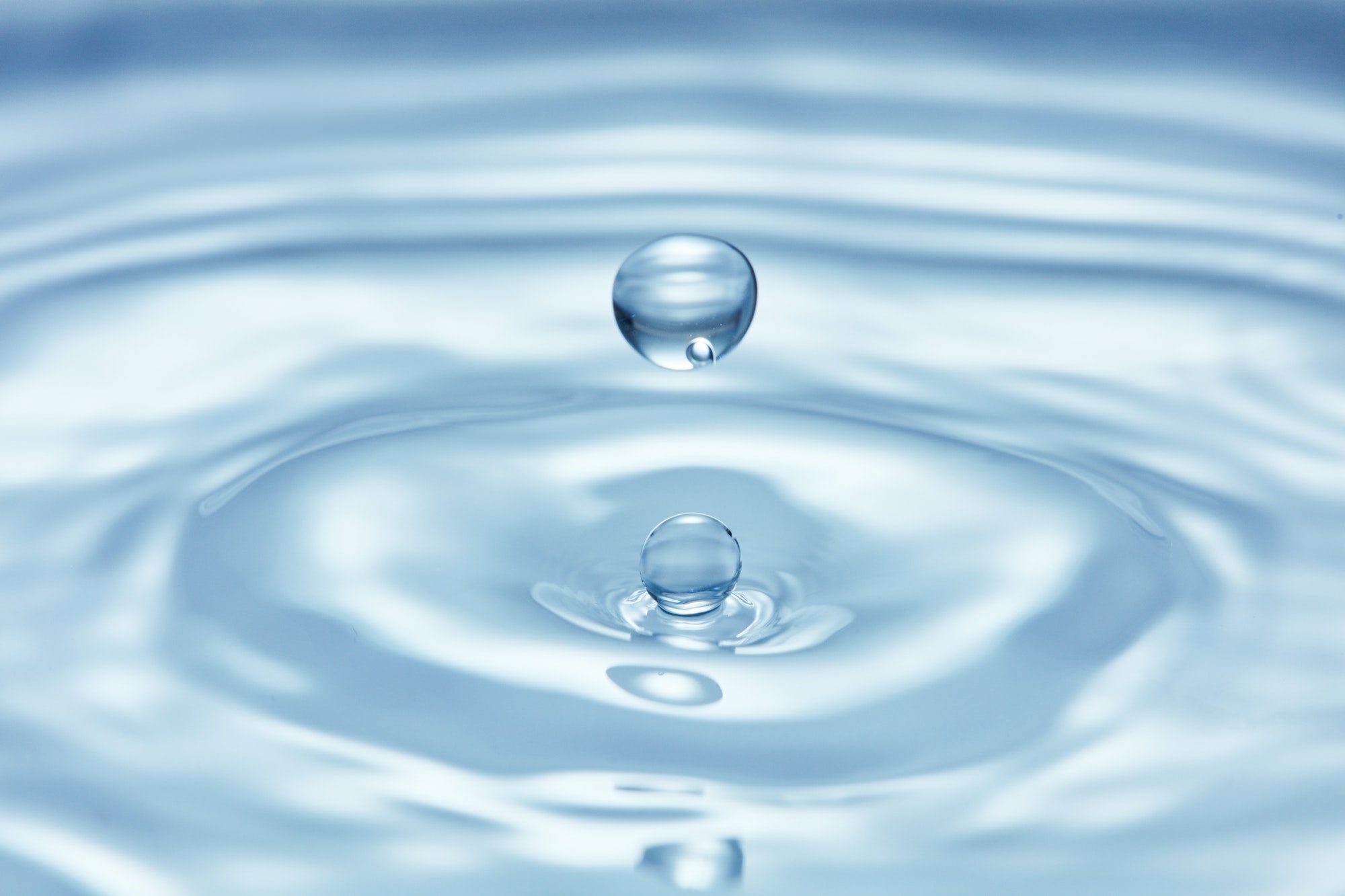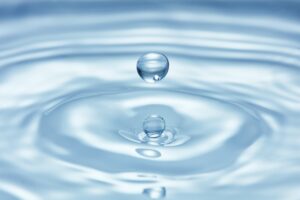Introduction
To the average person, water is a common and ordinary substance which is often taken for granted, that is until a drought threatens crops and drinking water supplies, or a severe flood destroys life and property. Most people do not understand that without water, and its unique and unusual properties, life, as we know it on earth, would not exist.
The abundance of water is apparent. It is also the only substance naturally present on earth simultaneously in three distinct states or forms– solid, liquid, and gas. On a cold winter day, snow and ice cover a field, while water flows in a nearby stream and gaseous clouds float overhead.
Forms of Matter
All substances exist in three distinct forms (solid, liquid, and gas). The form of a substance, at a given time, is a function of temperature and pressure. A solid is defined as matter with rigidity and definite shape, having a crystalline internal structure. Solids tend to resist external forces. Solids can be converted to liquids by heating. The freezing point temperature of pure water is 0o C, at one atmosphere pressure. At temperatures below the freezing point, water exists as a solid – ice.
A liquid, in contrast to a solid, lacks rigidity and has no definite shape. It has a definite volume and conforms to the shape of the container in which it is stored. External forces will cause a liquid to flow. Water is a liquid between the freezing point temperature (0o C) and the boiling point temperature (100o C), at one atmosphere pressure. Liquids can be converted to the gaseous phase by heating beyond the boiling point temperature.
A gas has neither rigidity nor definite volume. A gas conforms to the shape and volume of the vessel containing it. A gas greatly expands and contracts with changes in temperature and pressure and has the ability to readily diffuse into other gases.
Boiling and Freezing Points
Water has unusually high boiling and freezing point temperatures, compared to other compounds with similar molecular structure. All other compounds with similar molecular structure are gases at ordinary temperatures. However, due to the polar nature of the water molecule, and hydrogen bonding, the boiling point of water is a remarkable 100o C and the freezing point is a remarkable 0o C. The boiling point of the most similar substance (Hydrogen Sulfide) is –60o C and the freezing point is –84o C.
Freezing
Generally, substances contract (become denser) with a decrease in temperature, and water is no exception. Between 4o C and the freezing point at 0o C, an amazing thing happens, water gradually expands becoming less dense. Since the density of ice is less than that of liquid water, ice floats on water. About one-eleventh of the liquid volume is added at freezing.
It is very significant that ice expands and floats on water. The consequences of this action can be seen in broken water lines in the winter and potholes in the roads. In fact, the freezing and thawing action of water is largely responsible for the fracturing of rock and the formation of soils. Also, consider the consequences if lakes and streams froze from the bottom to the top – aquatic life would not even exist, and climate and weather patterns would be altered drastically.
Heat Capacity
Another remarkable property of water is its extremely high capacity to absorb heat, without a significant increase in temperature. For example, the summer sun at the beach will increase the temperature of the sand to the point that it is too hot to walk on; however, the water is cool to the touch. Both the sand and the water absorb the same amount of heat energy, but the temperature of the sand is higher than the water temperature. The high heat capacity of water makes it a good coolant to use in condensers and automobile radiators to keep engines from over-heating. Water can absorb about five times the amount of heat of sand for an equivalent increase in temperature.
The moderate climate in coastal areas is the result of the absorbing of huge amounts of solar heat energy by water during the day and the slow release of heat energy during the night. Inland areas, away from the coast, typically experience much wider temperature extremes. The vast oceans on earth (about 75 percent of the surface area) are responsible for tempering the climate on earth, permitting life to exist.
Universal Solvent
A solvent is a substance capable of dissolving another substance (solute) to form a homogeneous mixture (solution) at the molecular level. The highly polar nature of water makes it an excellent solvent, especially for other polar compounds – salts, alcohols, carboxyl compounds, etc. More substances dissolve in water than in any other solvent. More than half of the known elements can be found in water, some in high concentrations, and others only in trace amounts. The ability of water to dissolve a substance depends on the chemical composition, chemical bond strengths of the elements, temperature, and pH.
Non-polar compounds including most hydrocarbons are difficult to dissolve in water and dissolve in low or trace amounts. For example, oils tend to float on the surface of water.
Surface Tension
Hydrogen bonding is attributed to the ability of water to adhere to or “wet” most surfaces; such substances are said to be hydrophilic (water-loving). Other substances such as oils, fats, waxes, and many synthetics (polypropylene, etc.) will not “wet” with water; these substances are hydrophobic (water-fearing). Membrane filter cartridges for water filtration, made from hydrophobic polymers and with sub-micron pore sizes (< 1 micron), must be manufactured with wetting agents to lower the surface tension of the water to allow the water to “wet” the pores of the filter. Once the pores are filled with water, water will stay in the pores due to the surface tension; this is termed capillary action. Capillary action is responsible for the movement of water through soils, blood through blood vessels, and water carrying nutrients through the roots of plants.
Medium of Life
Water is an essential ingredient for the existence of life, as we know it. This explains the recent interest in discovering water in other parts of the universe. All known biochemical processes occur in aqueous environments. The composition of most living things is 70 to 80 percent water, by weight.
Water plays a significant role in the process of photosynthesis. In photosynthesis plants utilize radiant energy from the sun to convert two inorganic substances, water and carbon dioxide, into carbohydrates and oxygen.
Photosynthesis is the most basic and significant chemical reaction on earth. It supplies the primary nutrients, directly or indirectly, for all living organisms and is the primary source of atmospheric oxygen.
Conclusion
To the average person, water is an ordinary substance, often taken for granted. Even though the cause of these unique and unusual properties is explainable, at the atomic level, water is truly a remarkable substance. From our examination of these properties, it is evident that water is essential for life, as we know it, to exist on earth. Water is the mediator of chemical and biochemical processes. Water shapes our natural environment and even mediates our climate and weather. Without water we would not be here.




